At the narrow ends of the design, there are single tulips (here a little bit narrowed):
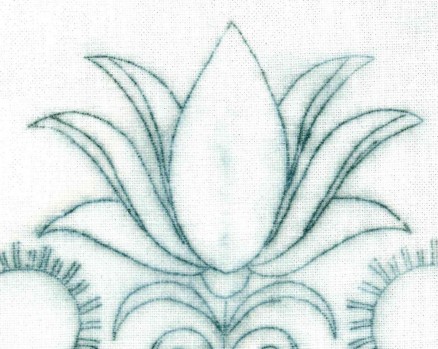
The center part of the tulip is well suited for a filling pattern. The center is flanked by 3 narrow, long and pointed petals. Two of these petals have an additional division. How to stitch those forms?
It would be possible to delete the additional lines to get more space.
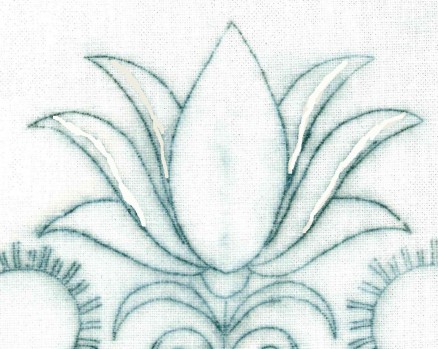
Regardless, the shapes of the outside petals are too narrow to embellish them with withdrawn thread patterns. One must consider other ways to embroider them.
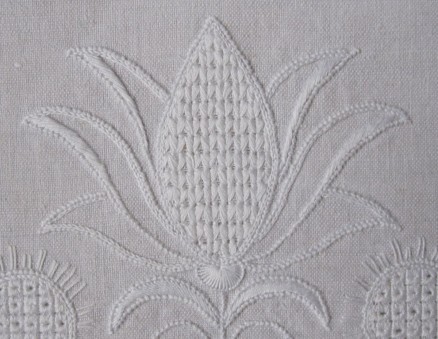
On the oval runner the outlines of the petals were stitched with Coral Knots. Inside some – not all – of these lines, Chain stitches were worked. The small areas of the additional division were filled with Satin stitches. The middle area of the petals remain free of further embellishment.
In the center of the tulip the Limet pattern “Hasenohren” (Limetrosen I, page 44) was worked.
The small pointed leaves below the tulip were outlined with Coral Knot stitches and filled with Satin stitches.
Coton à broder in the following sizes was used: No. 20 for the Coral Knot stitches, No. 25 for the Satin stitches, No. 30 for the Chain stitches and the filling pattern.
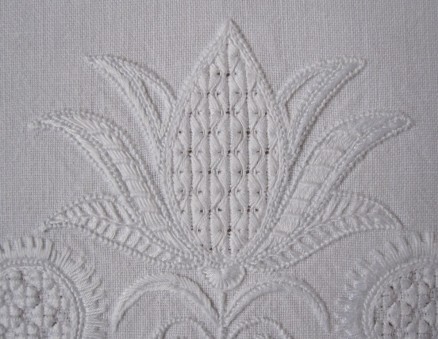
On the rectangular runner the outlines of all petals were stitched with Coral Knots. The small parts of the additional division were filled with Satin stitches.
In early Schwalm whitework there are many patterns suitable for long, narrow shapes. So, I used the opportunity to mix both techniques. For the two pairs of lower petals, I used elements of the early Schwalm whitework. The middle petals were embellished with Reverse Raised Band Stem stitch (Early Schwalm Whitework, page 59), the bottom petals were embroidered with Wing stitch (Early Schwalm Whitework, page 47).
In the center of the tulip the Limet pattern “Jugendstilstreifen – ohne Lücke” (Limetrosen I, page 39) was worked. This pattern matches the form of the shape very well, I think.
The small pointed leaves below the tulip were worked divided and with Satin stitches. (Detailed instructions for working these leaves can be found in Basic Principles of Schwalm Whitework, pages 29 and 30.)
Coton à broder in the following sizes was used: No. 16 for the Coral Knot stitches, No. 20 for the Satin stitches, the Reverse Raised Band Stem stitches and the Wing stitch, No. 25 for the Chain stitches and the filling pattern.
Part (1) of this series can be found here.
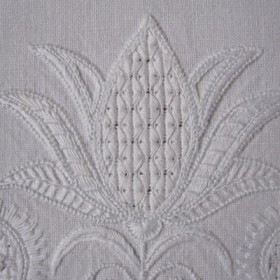


Leave a Reply